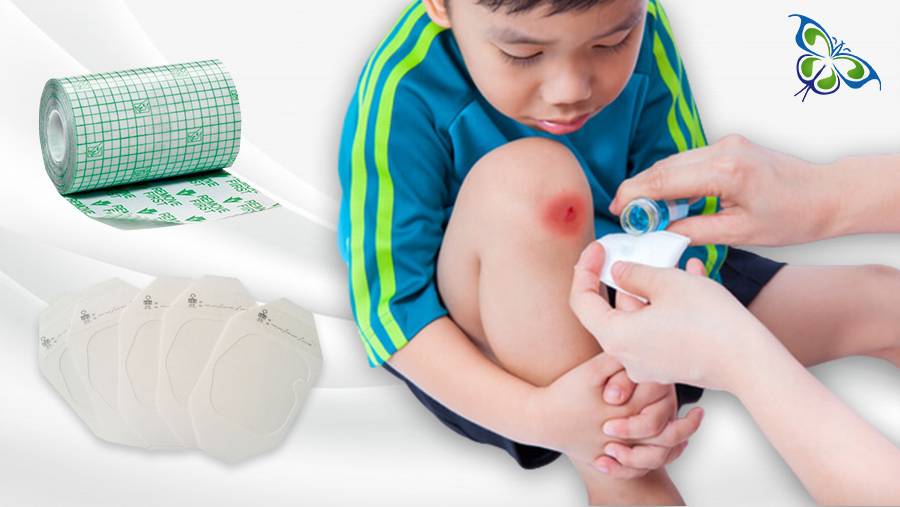Yes, you've got that right – transparency simply assures the fact that the wound is visible. It has no extra contribution to the wound healing process. But it allows you or your caregiver to investigate or observe the wound as the days of treatment progress.
Virtues of transparent film dressings –
A walk through the attributes of a transparent film dressing –
- They are waterproof and also do not allow bacteria or any other contaminants to enter the wound bed. Thus, protection against bacterial invasion is provided.
- However, they are permeable to moisture and also allow the vapor of carbon-di-oxide and excess moisture from the wound bed to evaporate
- They are quite flexible and can be used on wounds at difficult locations such as the elbow, edge of your chin, etc.
- They cannot absorb fluids
- Their transparency allows visualization of the wound throughout the days of treatment.
- They are made of polyurethane which makes them perfect for patients with latex allergy!
Indications for the use of transparent films –
Given these attributes, transparent films are put to different wound care treatment purposes. Wound indications that call for the use of a transparent film are:
- Wounds with minimal drainage
- Partial-thickness wounds (but they should have no or only minimal drainage)
- To treat wounds with thin skin (where the skin needs to be kept intact) such as the elbow, ankles, chin portion, etc. The film protects these sites from friction too
- To secure another dressing
- Sometimes to secure IV catheters
- Also in case of other channels that are done to inject fluid in hospitalized patients, transparent films are used.
The contraindications…
So far, our discussion included the indications to use transparent film dressings. But what about the contraindications? A knowledge of contraindications is most important for wound care treatment. Knowing where not to apply is more crucial than the knowledge of where to apply. That is because wrong dressing applications may result in dire consequences. When you are not aware of the particular use of a dressing you can always research or consult your caregiver about the functionality of a dressing. But applying them without a thorough idea of their type and utility may be at times perilous!
As we move on to discuss the contraindications, here are certain situations where transparent film dressings are not applicable –
- Do not apply them on moist wound beds – the adhesive will be lost on coming in contact with the moisture
- Moderate to heavy exudates are not ideal for getting a transparent film dressing
- Third-degree burns and/or infective wounds are not suitable either
- Fungal infection or active herpetic lesions do not accept such dressings too.
Besides the above-mentioned contraindications, transparent films are not the perfect dressing material for old people or any other person with thin and fragile skin! Patients on steroids are also advised against the use of transparent films as the dressing removal may cause tearing and stripping of the epidermis!
Steps to apply a transparent dressing –
- Put on a pair of clean hand gloves
- Clean the wound with a saline solution
- Pat a gauge pad (preferably 4”x 4”) surrounding the wound to make sure the skin (where the dressing is to adhered) is clean and dry.
- You may rub the skin with some alcohol to enhance the adhesion. Alternatively, often a liquid barrier is applied to the wound surrounding to protect it from exudates.
- For deeper wounds, you certainly need to apply some packing or filler material
- Now peel off the liner from your transparent film dressing. Don’t forget to cut the dressing an inch or two bigger (on all sides) than the wound area.
- Place the dressing centered on the wound. You should be able to view the wound through the film. No extra stretching is required. It should be placed smoothly.
Remove your gloves, discard them, and you are done with your wound dressing!

